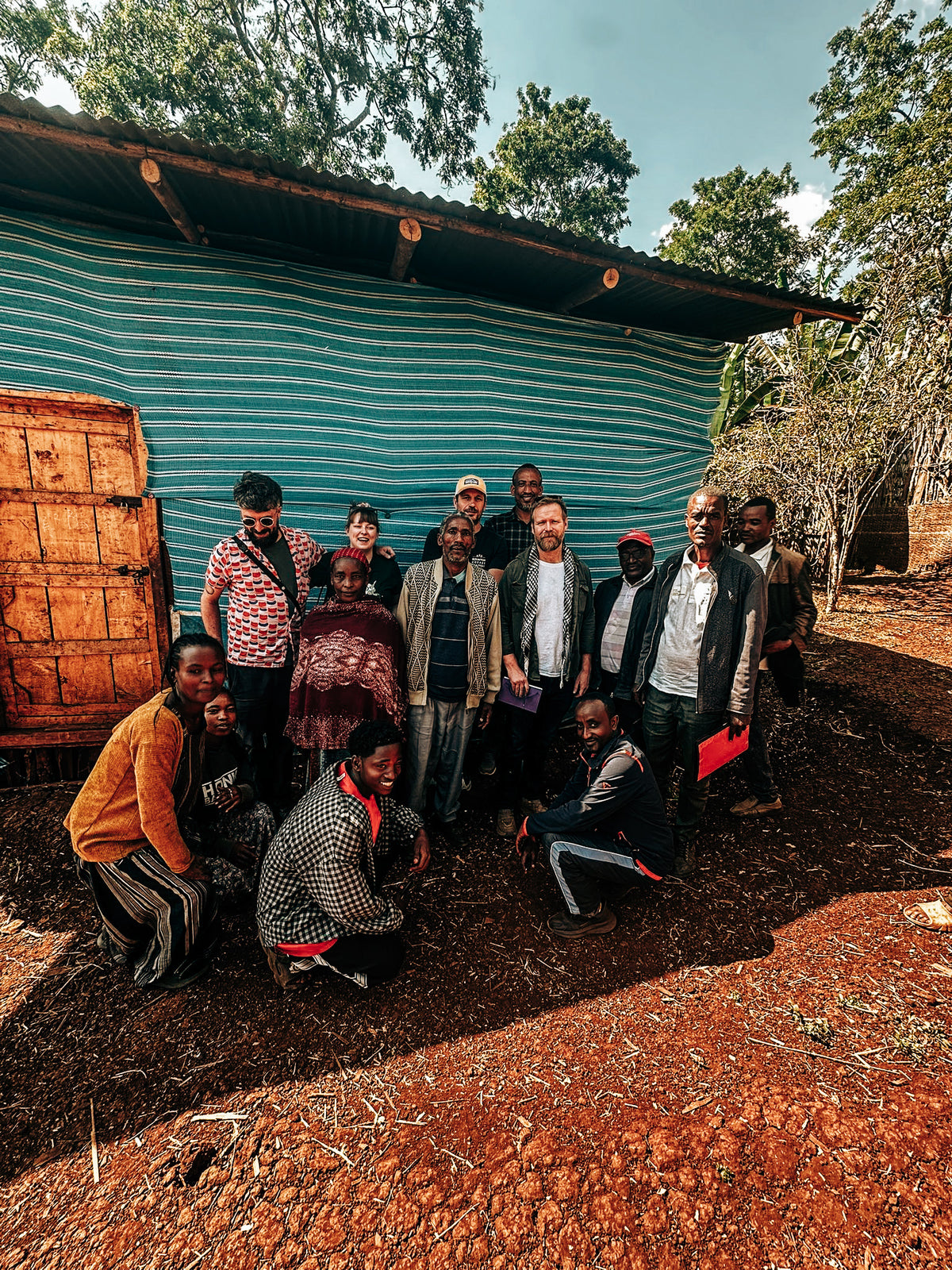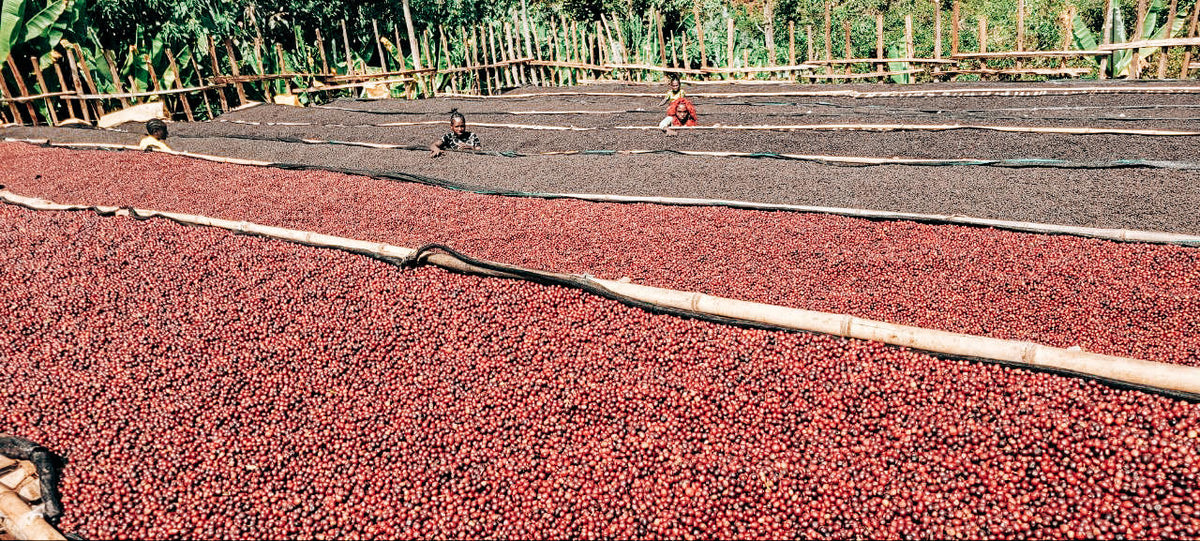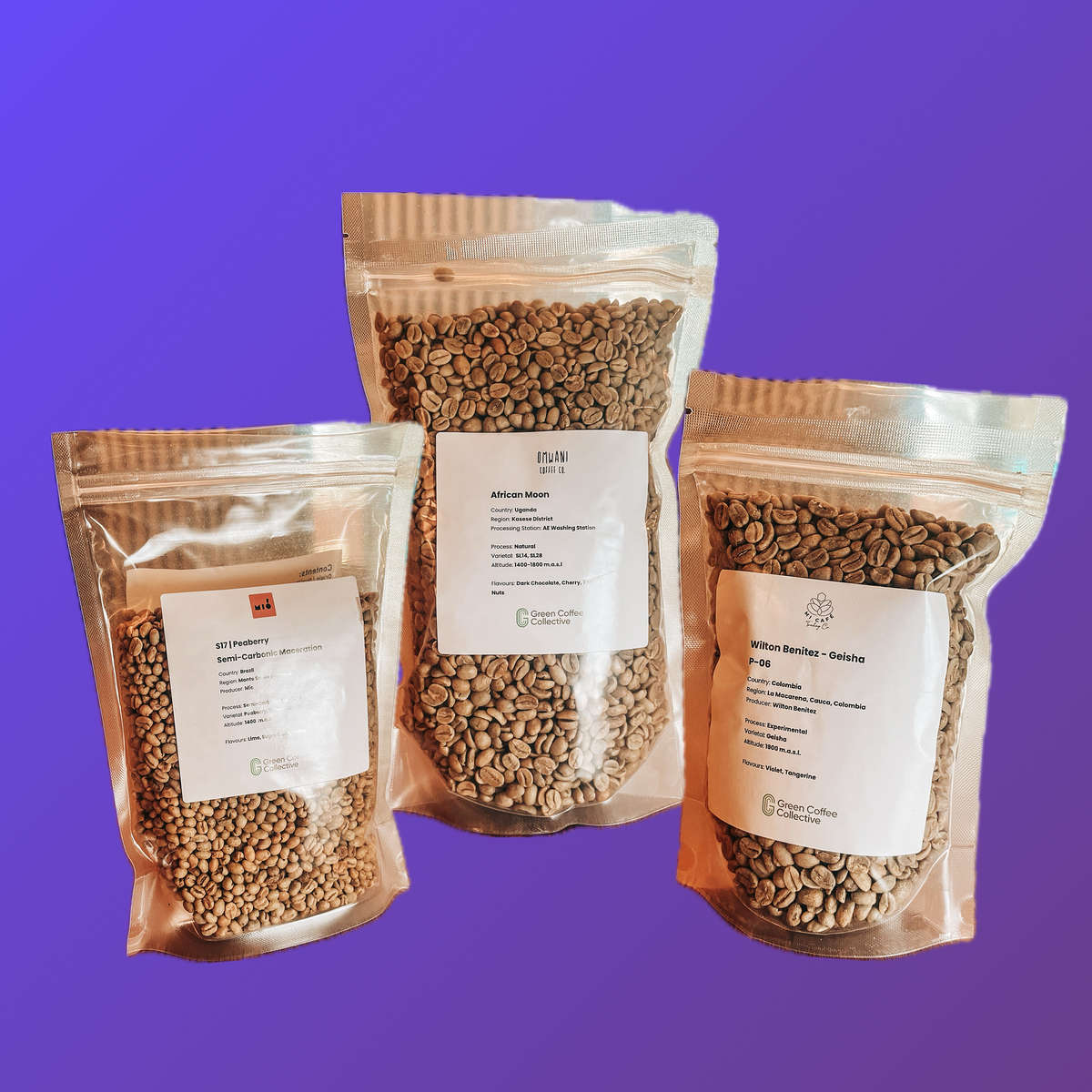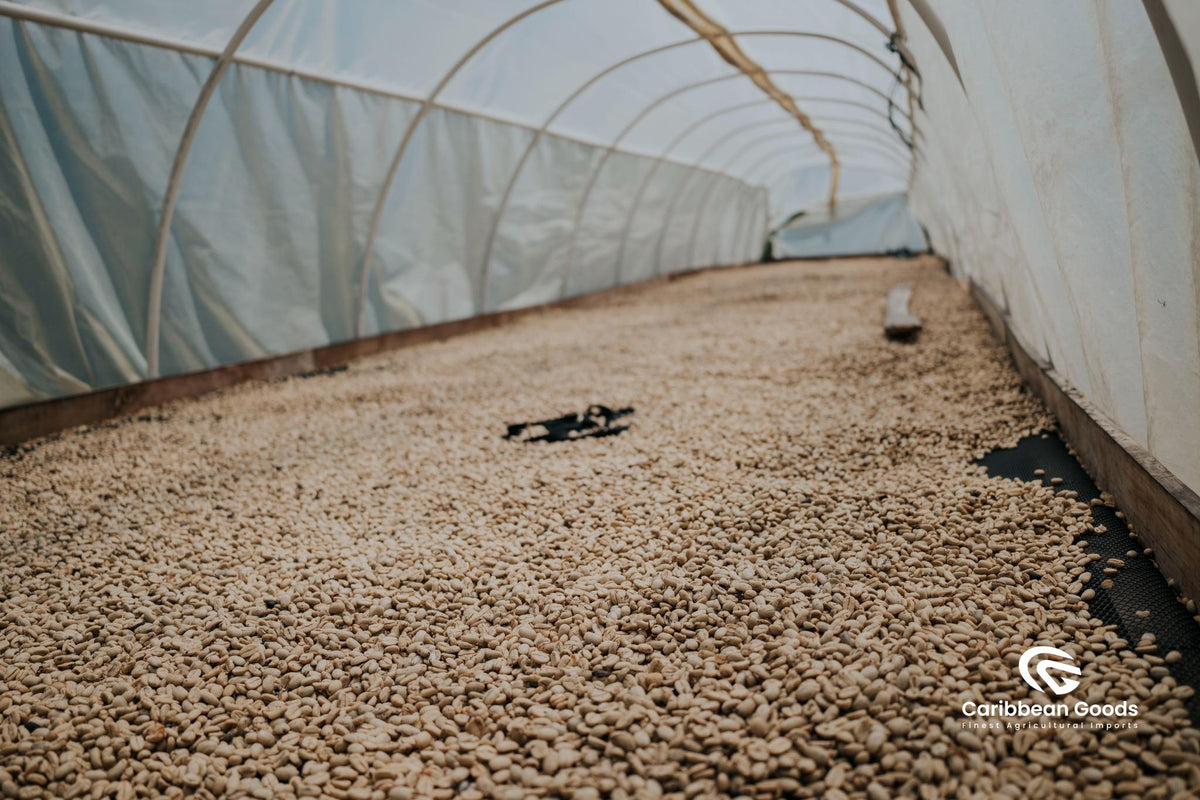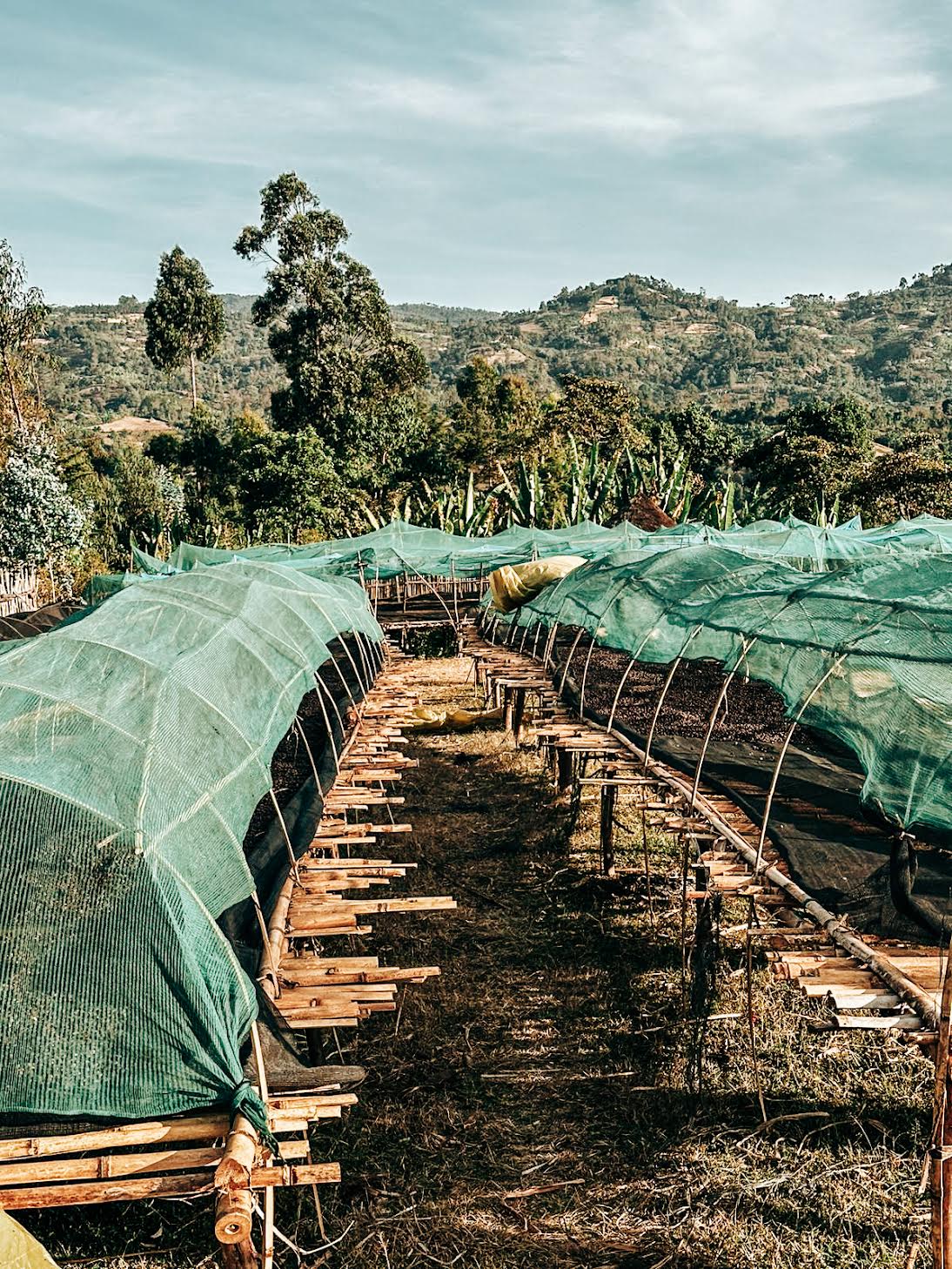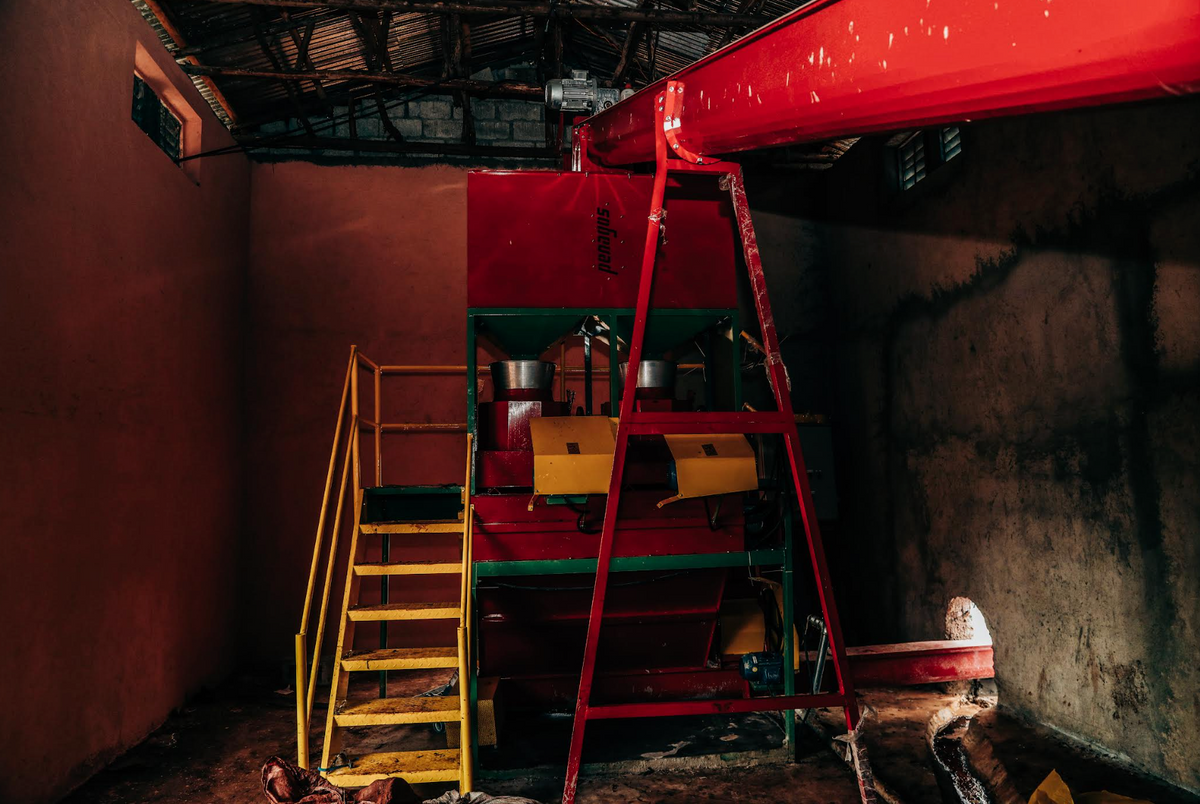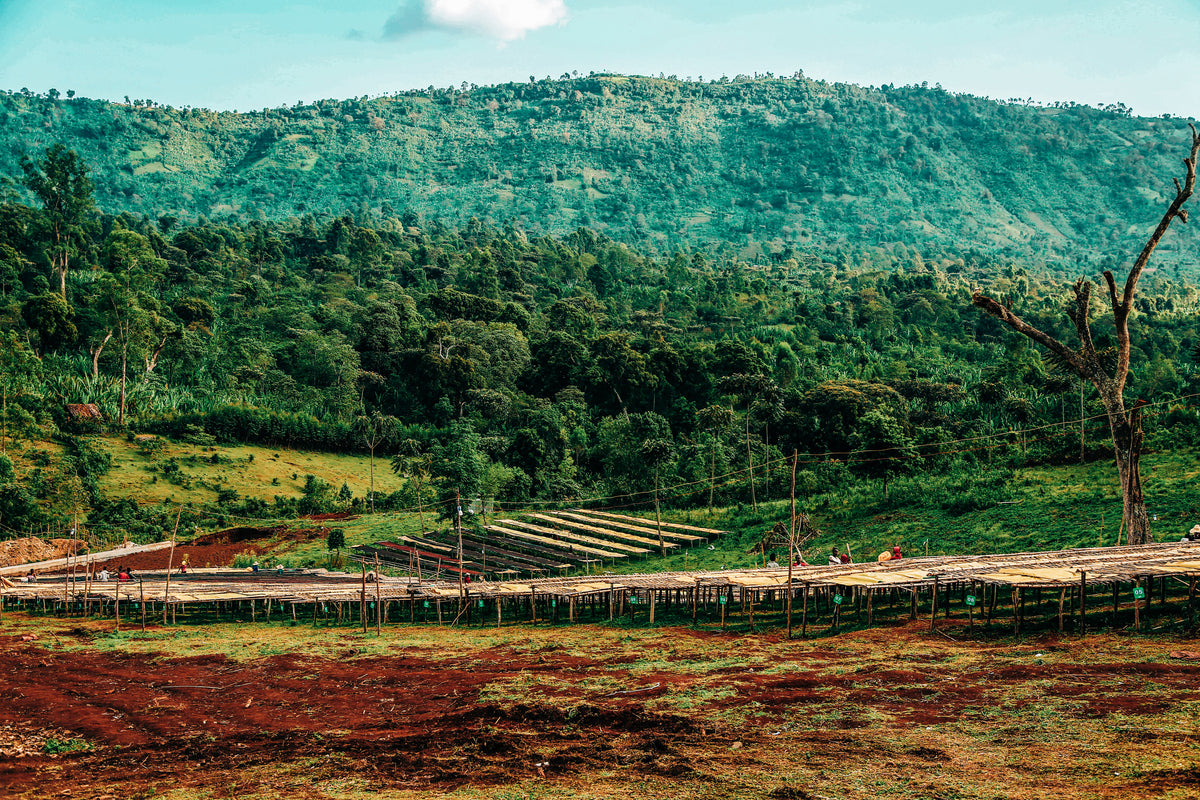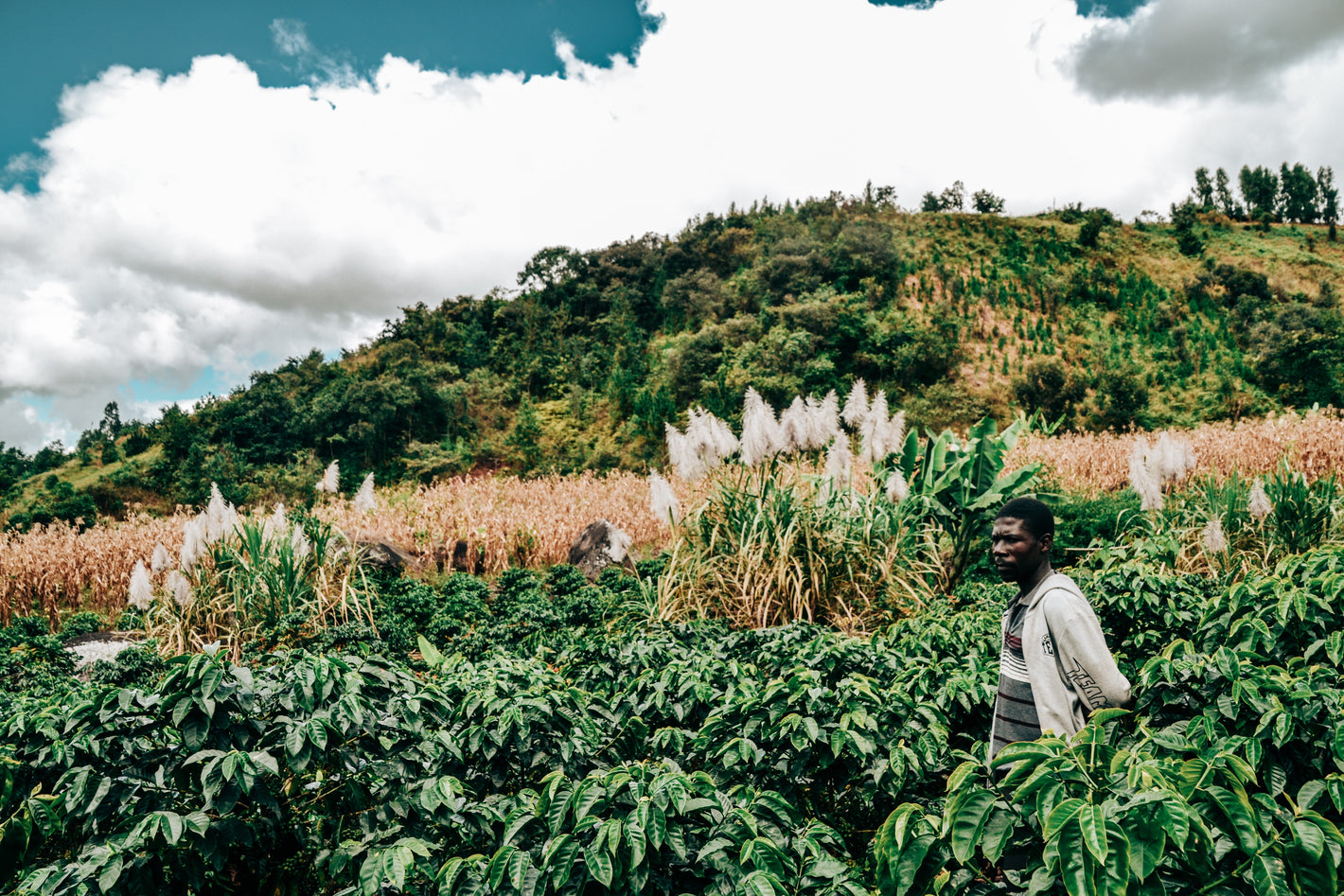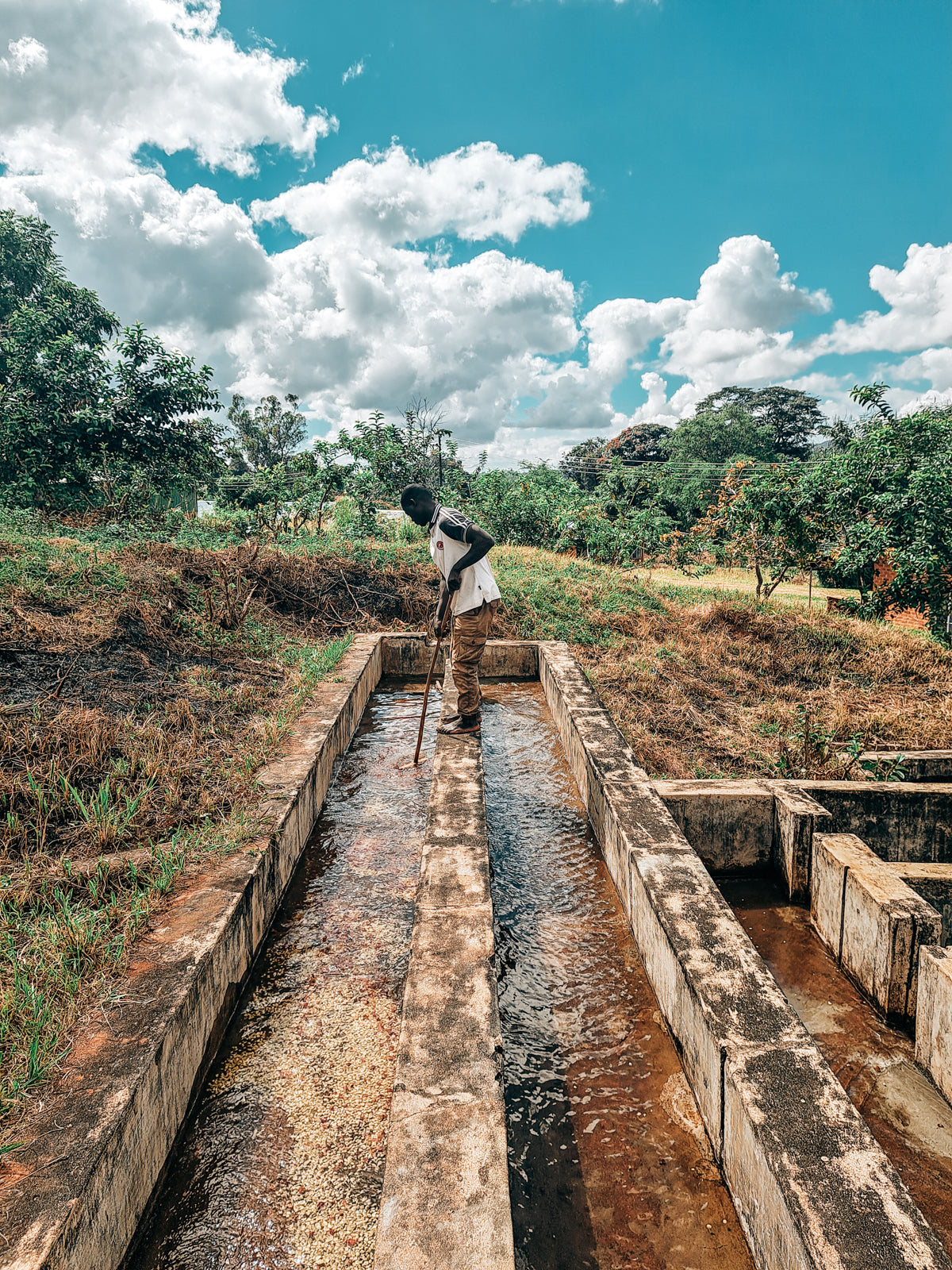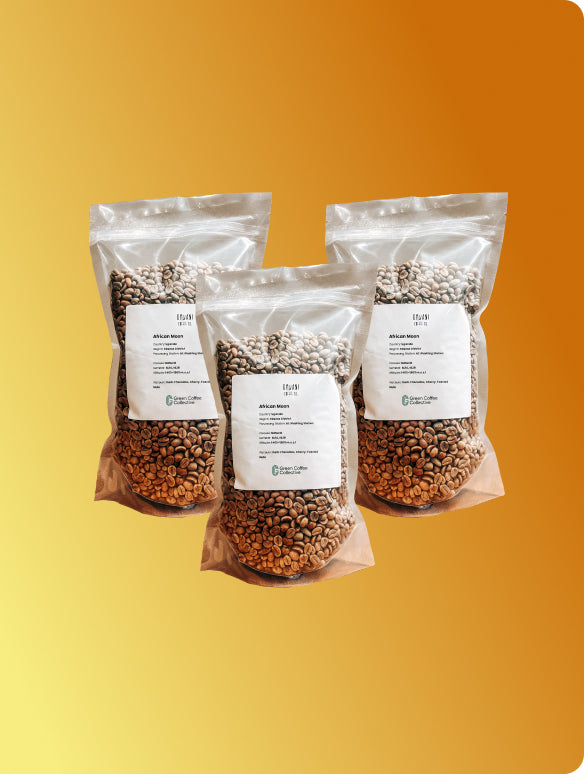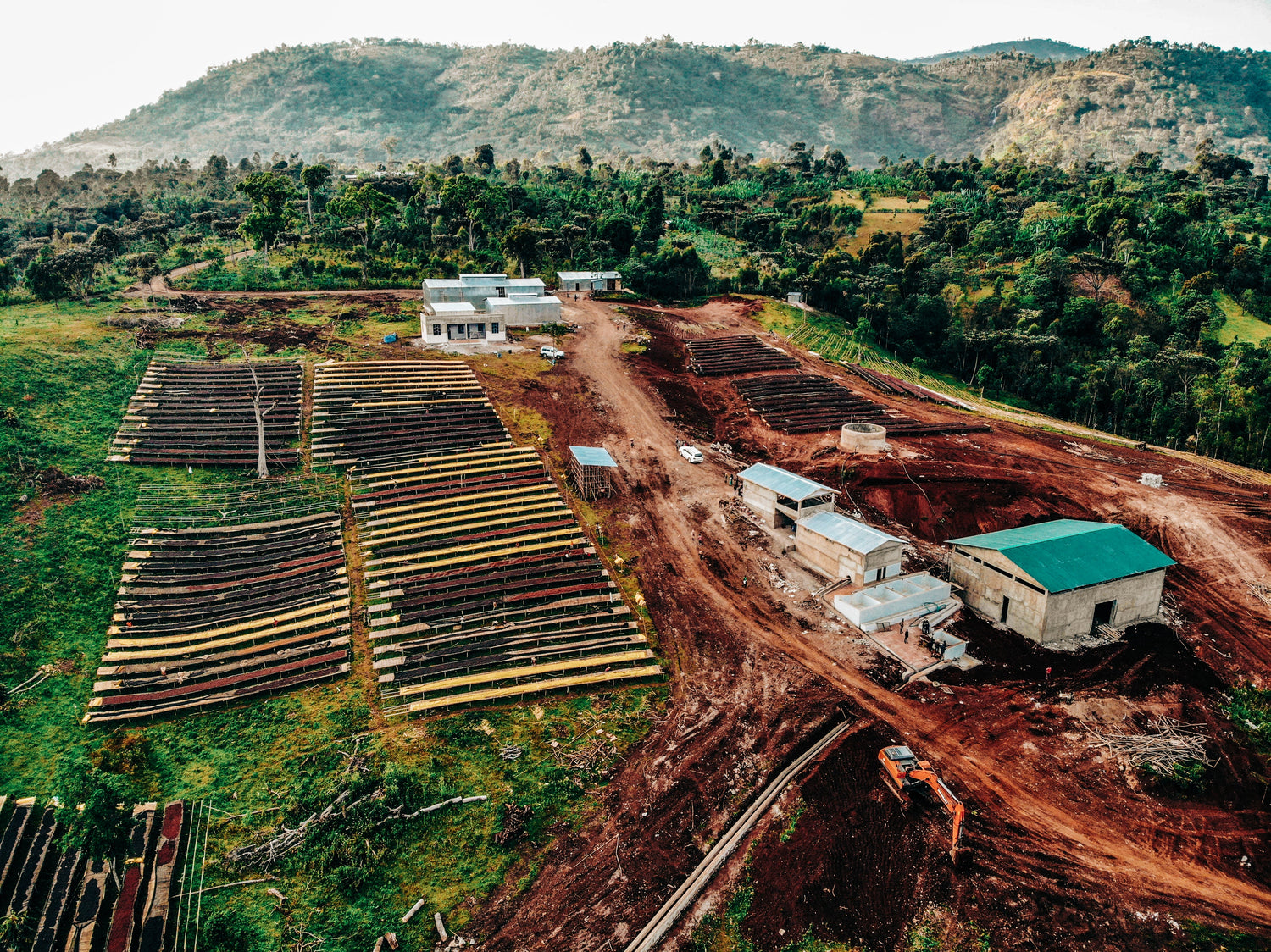
Ethiopia Green Coffee Beans
Ethiopia is the birthplace of coffee, producing some of the most vibrant and complex beans in the world. Grown at high altitudes, Ethiopian green coffee beans offer bright acidity, floral aromas, and rich fruit-forward flavours. We offer both wholesale options and smaller sizes for sampling or home roasting, making it easy to discover the unique flavours of Ethiopian coffee.
-
Aragash Gelcha Natural
Cupping Score88.25Processing methodVarietal74110 , KurumeMain flavour notesBlack Tea | BlackberryIn Stock+25kg left -
Bekele Balaycho Natural
Cupping Score87.75Processing methodVarietalLandraceMain flavour notesBlackberry | Brown SugarIn Stock+35kg left -
East African Natural Staple Subscription
Processing methodVarietalMultipleMain flavour notesRed Berry | Fruity | Syrupy SweetnessIn Stock -
Explorer - Rolling Green Bean Subscription
Processing methodVarietalMultipleMain flavour notesVaries from each coffee -
Mitiku Yabato Natural
Cupping Score87.75Processing methodVarietal74158 , 74110 , Local Land RacesMain flavour notesBlueberry | Creamy | UmamiIn Stock+20kg left -
Natural Buncho
Cupping Score87.0Processing methodVarietal74158Main flavour notesTropical Fruit | Bright Acidity | SweetOut of Stock -
Natural Odaco
Cupping Score87.75Processing methodVarietal74158Main flavour notesHerbal | Pineapple | Strawberry | CitrusOut of Stock
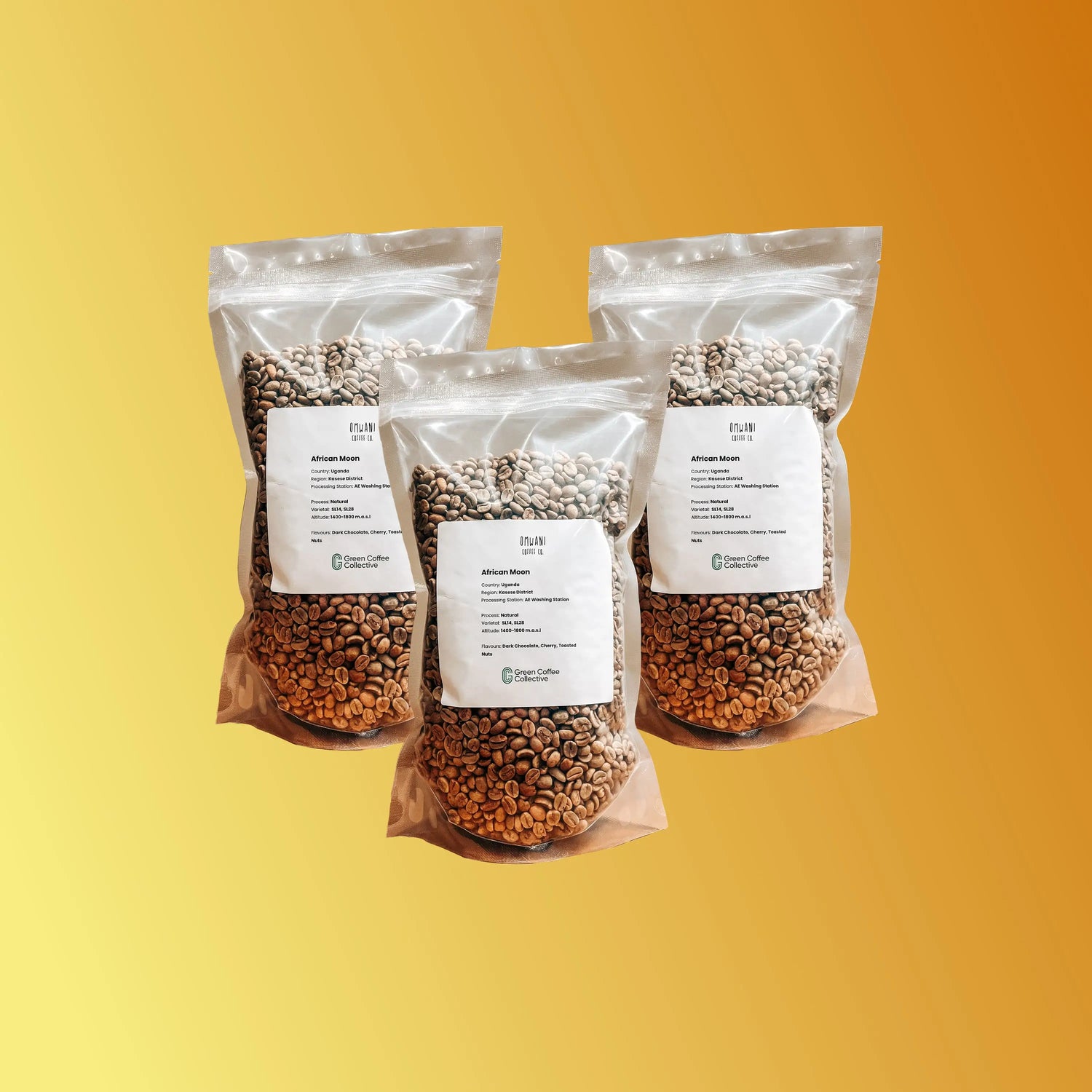
Your guide to Ethiopia Green Coffee Beans
-
Why is Ethiopian coffee special?
-
Why is Ethiopian Coffee so acidic?
-
What is our relationship with Ethiopian producers like?
-
Unlock the birthplace of coffee, where heritage meets complexity in every green bean.
-
Why Ethiopia Green Coffee Beans Are Famous
-
Why Roasters Love Ethiopia Green Coffee Beans
-
Flavor Profile & Cupping Notes
-
Coffee-Growing Regions of Ethiopia
-
Varietals & Species
-
Harvest Seasons & Availability
-
Processing Methods in Ethiopia
-
Notable Varieties of Ethiopian Green Coffee Beans
-
Usage & Versatility of Ethiopian Green Coffee Beans
-
Best Brewing Methods for Ethiopian Green Coffee Beans
-
Quality Standards for Green Coffee Beans in Ethiopia
-
Sourcing & Traceability
-
Buy 100% High-Quality Ethiopian Green Coffee Beans

